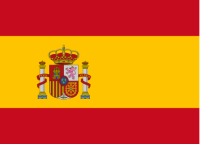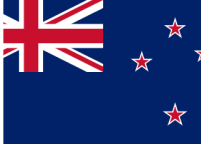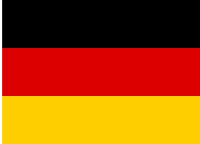On December 21, 2023, Immigration New Zealand made a pivotal announcement regarding the Accredited Employer Work Visa (AEWV) program. This announcement involved pausing the planned increase in the median wage rate, initially scheduled for February 2024. This pause has significant implications for various stakeholders, and understanding its details necessitates a comprehensive examination of the wage rates in New Zealand, especially the median and minimum wage rates.
Detailed Analysis of the Median Wage Rate
Definition and Role in AEWV:
- Median Wage Rate: This is the middle value in a list of wages, signifying that half of the workers earn below this amount and half earn more.
- AEWV Requirement: Employers hiring migrant workers under the AEWV must pay at least this median wage rate.
Current and Proposed Rates:
- Current Rate: The median wage rate is NZD $29.66 per hour.
- Planned Increase and Pause: The government intended to raise this rate to NZD 31.61 per hour in February 2024, but this increase has been postponed.
Impact of the Wage Rate Pause
- AEWV Workers: Their wage rate will continue at NZD 29.66 per hour.
- Partners of AEWV Workers: The pause also affects the median wage requirements for their partners.
- Sector Agreements and Exemptions will remain at the current median wage rate.
Median Wage in Other Visa Categories
- Skilled Migrant and Parent Categories: The new median wage rate of NZD 31.61 per hour will be implemented for these categories starting February 2024, despite the pause for the AEWV.
Rationale Behind the Pause
- Government’s Strategy: This pause provides a window for considering alternative approaches to the median wage threshold in the AEWV, in line with the government’s aim to eventually eliminate this threshold.
Understanding Wage Thresholds
- Wage Thresholds: These are used by Immigration New Zealand to determine eligibility for certain visas, with the median wage being a key indicator of job skill level.
- Annual Updates: The median wage threshold is revised annually in February, based on the previous June’s median wage from Stats NZ.
Recent Wage and Salary Trends in New Zealand
- Median Weekly Earnings: Increased by $84 (7.1%) to $1,273 in the year to June 2023.
- For men: Increased by $80 (6.1%) to $1,400.
- For women: Increased by $85 (8.1%) to $1,140.
- Median Hourly Earnings Increased by $1.95 (6.6%) to $31.61 from June 2022.
- For men: Increased by $2.15 (7.0%) to $33.00.
- For women: Increased by $2.15 (7.7%) to $30.15.
AEWV Wage Requirements
- Minimum Pay for AEWV: Jobs must pay at least NZD$29.66 an hour, except for sector agreements.
- Sector Agreements: Some industries have ‘sector agreements’ allowing payment below the median wage for specific AEWV roles.
Sector Agreements and Wage Exemptions
- AEWV Flexibility: Sector agreements and exemptions facilitate hiring migrants for wages below the median in specific sectors.
- Specific Sectors with Agreements: Includes care workforce, seafood processing, construction, and others.
Many people confuse the Median wage with the Minimum wage; let’s understand what minimum wage is.
The minimum wage in New Zealand, as defined by the government, is the lowest legal hourly wage rate an employer can pay employees. The government sets it and is a part of labour law to ensure a minimum standard of living for workers. The minimum wage applies to nearly all New Zealand employees, covering those employed full-time, part-time, on a temporary basis, under contract, or in casual roles.
There are different types of minimum wages, including:
- Adult Minimum Wage: This is the standard minimum wage for employees who are 16 years old and over and are not starting-out workers or trainees.
- Starting-Out Wage: This applies to workers aged 16 to 19 entering the workforce for the first time or involved in specific training or apprenticeship programs.
- Training Minimum Wage: This is for employees aged 20 or over undertaking recognized industry training involving at least 60 credits a year.
The prevailing minimum wage rates (pre-tax) are effective from April 1, 2023, and are applicable to individuals aged 16 years or older
|
Type of minimum wage |
Per hour |
8 hour day |
40 hour week |
80 hour fortnight |
|
Adult |
$22.70 |
$181.60 |
$908 |
$1,816 |
|
Starting-out |
$18.16 |
$145.28 |
$726.40 |
$1,452.80 |
|
Training |
$18.16 |
$145.28 |
$726.40 |
$1,452.80 |
Source : https://www.employment.govt.nz/
These rates are reviewed and adjusted by the government annually, taking into account factors such as the cost of living, inflation rates, and the general state of the economy. Establishing a minimum wage aims to protect workers from unjust employment practices and ensure they earn an income adequate for their basic living costs.
Median vs. Minimum Wage in New Zealand

- Median Wage Rate: Dynamic, influenced by economic conditions and sector demands.
- Minimum Wage Rate: Static, legally mandated lowest wage, typically adjusted annually.
- Key Differences: The minimum wage is universal, while the median salary is more specific to certain visa categories and reflects current wage distributions.
|
Aspect |
Median Wage |
Minimum Wage |
|
Definition |
The median wage is the middle value in the list of salaries, where half the workers earn more and half earn less. |
The minimum wage represents the lowest wage legally permissible for employers to pay their employees. |
|
Purpose |
They are a benchmark for setting wages in specific visa categories like AEWV. |
Ensures a minimum standard of living for workers. |
|
Determination |
Based on the overall distribution of wages across the economy. |
Set by the government, often influenced by factors like cost of living, inflation, and economic conditions. |
|
Variability |
More dynamic changes with the economic conditions and wage trends. |
Relatively static, usually adjusted annually by the government. |
|
Scope of Application |
Specifically, it applies to specific visa categories and employment sectors. |
Applies universally to all workers across all sectors. |
|
Rate Updates |
Updated annually based on wage statistics (e.g., from Stats NZ). |
They are typically reviewed and adjusted annually by the government. |
|
Rate as of June 2023 |
NZD 29.66 per hour. |
NZD 21.20 per hour (as of April 2023, set to increase to NZD 22.75 per hour in April 2024). |
|
Sector-Specific Rates |
Some sectors have agreements (sector agreements) allowing different rates. |
There are no sector-specific variations; it’s a universal baseline across all sectors. |
|
Impact on Employment |
Influences the employment of migrant workers and those under specific visa categories. |
Affects the employment conditions of all workers, particularly those in lower-paying jobs. |
|
Government Policy |
The government uses median wage as a policy tool for immigration and sector-specific regulations. |
The minimum wage is a broader policy tool for addressing poverty, inequality, and living standards. |
This detailed comparison underscores the fundamental differences between median and minimum wages in New Zealand, highlighting how each operates within the context of employment and economic policy.
In summary, the New Zealand Government’s decision to pause the scheduled increase in the median wage rate for the Accredited Employer Work Visa (AEWV) program represents a strategic response to the current economic environment. By maintaining the median wage rate at NZD 29.66 per hour, the government is balancing the interests of both employers and migrant workers. This decision highlights the need to distinguish between the median wage, known for its dynamic nature and sector-specific application, and the minimum wage, characterized by its static, universal implementation. The median salary acts as a critical benchmark in specific visa categories and plays a crucial role in shaping the labour dynamics, particularly in sectors that heavily rely on migrant labour.
The pause in increasing the median wage rate allows the government to reconsider and potentially revamp its approach to wage thresholds within the framework of immigration policies. This move is indicative of a commitment to a balanced and responsive immigration policy that aligns with both economic needs and worker welfare. It highlights the government’s dedication to a labour market that is fair, adaptive, and responsive to changing economic conditions. Overall, this policy decision reflects a thoughtful approach to managing the intricate relationship between immigration, labour market demands, and the broader financial health of New Zealand.
Reference:














